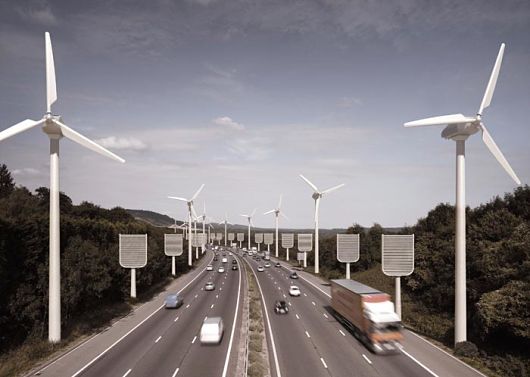Artificial Trees Absorb a Thousand Times More CO2

Scientists have been arguing for a reduction in carbon emissions ever since the effects of global warming were recognized. Now, to further aid the fight against increased global warming, some of these scientists have found a way to suck carbon dioxide from the atmosphere. This technology will manifest in the form of “artificial trees” that absorb up to one ton of carbon dioxide in a day.
These artificial trees look and feel nothing like real trees. In fact, they resemble cars in size and shape. Not only will they hey absorb carbon dioxide from the air a thousand times faster than a normal tree would, but they will also not release carbon back into the atmosphere unlike real trees.
Previous inventions that removed carbon dioxide from the atmosphere necessitated the processing huge volumes of air, since carbon dioxide makes up just 0.04 percent of the air we breathe. Artificial trees, however, will simply absorb carbon from the air into their leaves, which are coated with sodium carbonate. When sodium carbonate comes into contact with the carbon dioxide, it shall form a harmless bicarbonate – baking soda.
Klaus Lackner and Alan Wright, the brains behind this new technology, understood that carbon dioxide emissions needed to be decreased within the next few decades to prevent the non-reversible effects of climate change. Even if humans stopped all carbon dioxide emissions today, the amount left in the atmosphere would keep temperatures increasing for the next hundred years.
Artificial trees have the potential to reverse this trend. Ten million artificial trees could absorb 3.6 billion tons of carbon dioxide a year. This would amount to 10% of all global emissions. A single tree would initially cost $20,000, around the price of a car in the U.S. However, as production of these trees increase, price would also fall, making this initiative cost less prohibitive.
The carbon dioxide collected by the artificial trees could also be used or stored in few ways. It could either be transformed into a liquid and buried underground. Alternatively, hydrogen could be added to it to create hydrocarbon fuel. As long as the process uses renewable energy, this fuel would not release any new carbon dioxide into the atmosphere. Furthermore, the gas could be injected into rocks such as peridotite, which can hold huge amounts of carbon dioxide.
The concept of artificial trees is a simple one, yet has immense appeal. The economy of energy would remain the same, enabling people to continue living existing lifestyles. Artificial trees would just allow us to maintain these lifestyles better. Noting that the U.S. will also be producing as much petroleum as Saudi Arabia by 2020, it is unrealistic to hope that alternative sources of energy would replace oil any time soon.
On the other hand, it is not economically sound for companies to invest in these artificial trees currently. Only when high penalty for companies that have huge emissions is put in place, will absorbing carbon dioxide be viewed as a solution equivalent to reducing emissions.
– Radhika Singh
Sources: BBC 1, BBC 2, National Geographic
Photo: Physics World
